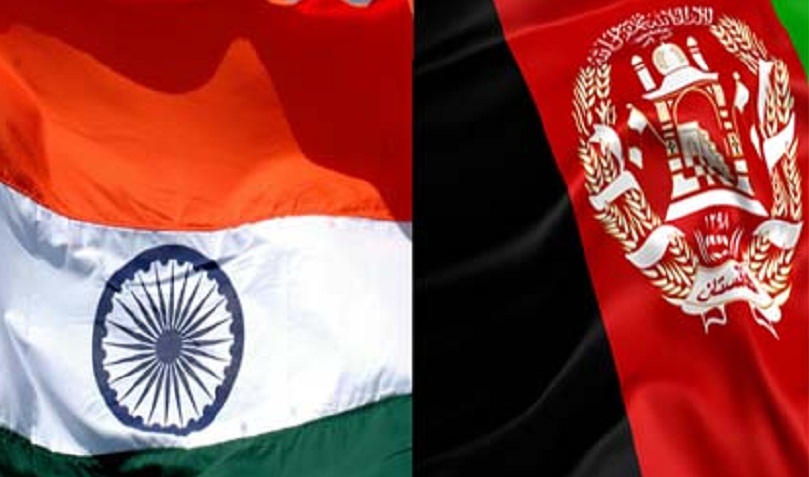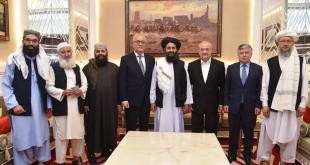In an environment where economic growth is modest, India today stands as a bright spot among the global economies. The International Monetary Fund (IMF) in its report has projected India’s growth for 2015 at 7.3%, and rising to 7.5% in 2016. In its report dated 12th November 2015, the IMF said that while emerging economy growth remains fragile and could be derailed in an environment of declining commodity prices, reduced capital flows, and higher financial market volatility, India’s growth will benefit from recent policy reforms, a consequent pickup in investment, and lower commodity prices. Moody’s ratings revised India’s sovereign rating outlook to “positive” from “stable”.
Foreign direct investment flows during the 2014-2015 reached US$ 44 billion. FDI has also for the first time in seven years exceeded the current account deficit. The government’s continued push towards FDI liberalization will continue to aid FDI flows. The Financial Times of London in its ranking of the top destinations for greenfield investment (measured by estimated capital expenditure) in the first half of 2015 shows India at number one, having attracted roughly $31 billion, $3 billion more than China and $4 billion more than the US.
Administrative reforms, simplification of approval processes, including online project approval and easier environmental clearance procedures, are expected to improve business sentiment and the ease of doing business in India. The Project Monitoring Group (PMG) set up under the Cabinet is reviewing a total of 704 projects worth US$ 451 billion, which have not received approvals because of hurdles like lack of fuel, green clearances and land acquisition with investments. To date the PMG has cleared a total of 411 projects entailing investments of US$ 253 billion. The government has set an ambitious deadline of 2016 for implementing the Goods and Services Tax (GST). A clear cut road map for lowering corporate tax from 30% to 25% over the next 4 years has been laid down.
Other forward looking initiatives by the government include nod for IPOs/FPOs by banks to raise funds, as long as government equity remains 52% or over. Nod for real estate and infrastructure investment trusts, with tax benefits. Cabinet nod for 100 Smart Cities Project. US$130 billion proposed spending on railways over five years on schemes including high-speed trains. Successful conclusion of two rounds of coal block auctions, more lined up. Impasse in mining sector ended with the passage of new bill for regulation and development. Successful conclusion of auctions for telecom spectrum for mobile telephony and broadband. Single-window scheme for various clearances to steel, coal and power projects. Clarity in tax treatment on income of foreign fund whose fund managers are located in India, as also on transfer pricing for resident and non-resident tax payers and waiving of retrospective imposition of a minimum alternative tax (MAT) affecting foreign funds.
In November 2015 the Cabinet approved a bailout plan for state government-owned electricity distribution companies (Discoms) in a move that could fundamentally change India’s power sector and also reduce the stress on books of banks that have loaned money to these financially unsound utilities. The rescue plan, called Ujwal Discom Assurance Yojna (UDAY), which is optional and to be operationalised through signing of a tripartite MoU (between Ministry of Power, the concerned State Government and the Discom) seeks to provide a solution to State Discoms and empower them to break-even in next 2-3 years.
November 2015 also saw the government awarding contracts to set up two locomotive plants. The contracts are two of the first and the largest to be awarded to foreign firms since India last year allowed 100% FDI in the railway sector. General Electric Co. (GE) will build a diesel locomotive factory and Alstom SA will set up an electric locomotive in the state of Bihar. The plants will be set up at an estimated cost of around Rs. 2,052 crore and Rs. 1,294 crore respectively. The two projects involve manufacturing 1,000 diesel locomotives and 800 electric locomotives over the next 10 years and are together worth about Rs. 40,000 crore. While the Railways will have 26% equity and provide land, the foreign companies will have a stake of the remaining 74% in each of the plants. The plants will be up and running within 3 years and 80% of all parts used in the manufacture of the locomotives will be sourced locally.
Medium-term growth prospects have also improved following recent policy initiatives towards unlocking coal and other mining activity, liberalization of FDI limits (100% in railways, 49% in insurance, and 49% in defence with the caveat that FDI in defence could go up to 100% with the control vested in the hands of the Indian JV partner and approval be secured from the government) and a renewed thrust on public investment in infrastructure, which would help to improve the investment climate. To boost the investment environment in the country, the government on November 10, 2015 further eased FDI norms across 15 sectors. Some of the new FDI norms include: composite FDI cap in the Banking sector has been raised to 74%, minimum investment commitment and floor area stipulation for FDI in construction has been done away with, FDI limit in news and current affairs TV channels and FM radio has been raised to 49% from 26%, FDI limit in Teleports, Direct-to-Home (DTH), digital cable networks, Mobile TV has been raised from 74% to 100%; FDI of up to 49% under automatic route is now allowed in Regional Air Transport Services; FDI of up to 49% is allowed in the defence sector under the automatic route and if in excess of 49% will be considered by Foreign Investment Promotion Board (FIPB). The cap for approval by the Foreign Investment Promotion Board (FIPB) has been increased to Rs 5,000 crore from Rs 3,000 crore. The Cabinet Committee on Economic Affairs (CCEA) will only decide on FDI proposals not under the automatic route and beyond Rs 5,000 crore.
As a result of the above measures, India has moved up 16 positions to rank 55th on a global index of the world’s most competitive economies compiled by the World Economic Forum. The jump in India’s position underlines the country’s recent economic recovery, improvement in the competitiveness of the country’s institutions and its macroeconomic environment. According to the Baseline Profitability Index of the Foreign Policy Journal, India has recently been ranked No. 1 among 110 countries making it the world’s topmost investment destination. The US International Trade Commission in its report Trade and Investment Policies in India (2014-15) mentioned that the Indian government has made significant changes in addressing barriers to trade and investment. Areas identified in the report where significant policy changes have been made include: FDI; tariffs and customs procedures; local content and localization requirements, particularly concerning ICT goods; and standards and technical regulations.
The World Bank now ranks India at 130 out of 189 countries on the Ease of Doing Business. That is up 12 places from its original ranking last year and 4 places from its rank on a revised list (based on a new methodology). According to the WB report, it takes 29 days to start a business in India today, unlike the 127 days it used to take in 2004. The biggest improvement was seen in the area of providing electricity connection to businesses, where India’s ranking improved from 99 in 2015 to 70 in 2016. India is ranked 8th in terms of protecting minority investors, 42nd in getting credit, but scores poorly in dealing with construction permit with a rank of 183 out of 189 countries. Enforcing contract (rank 178), paying taxes (rank 157), resolving insolvency (rank 136) are other areas where India ranks poorly. Forward movement on the goods and services tax (GST), setting up of commercial courts, enacting the bankruptcy law, simplifying taxation and corporate law, and easing the entry-exit norms are expected to give a boost to India’s ranking in 2016-17.
 Afghanistan Times
Afghanistan Times




